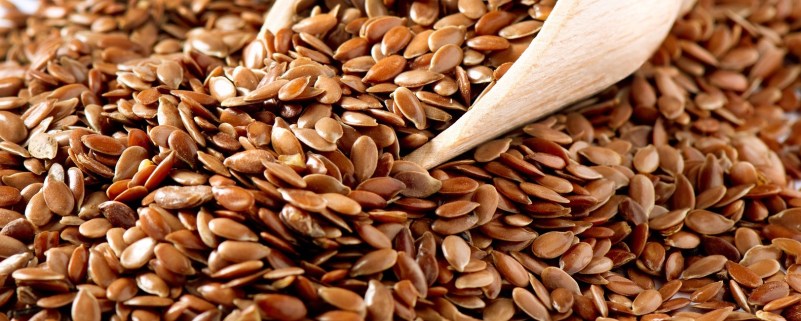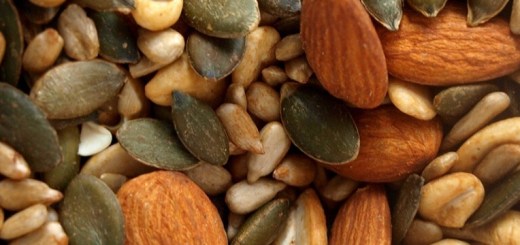
Flax Seeds or Chia Seeds: Which Do I Feed My Horse?
I’m often asked the question, “Should I feed my horse flax seeds or chia seeds?”
My answer: “It depends on the reasons you’re adding omega-3s.”
That was as clear as mud, wasn’t it?
There are benefits to both, and whether you choose flax seeds or chia seeds depends on your horse and his or her needs.
Flax seed nutrition
Flax seeds have been fed to horses for literally hundreds of years. It is mentioned as a food for horses in many of the re-printed equine veterinary books of the mid-1800s. Flax provides high amounts of omega-3 fatty acids and very low amounts of omega-6, with a total ratio of omega-3 to omega-6 of 3:1.
As for macronutrients, vitamins and minerals, flax seed contains 40% fat, 30% fiber, 20% protein and small amounts of B1, manganese, magnesium, phosphorus, and copper.
Freshly ground, stabilized, whole, soaked, or cooked?
There are lots of opinions on how best to feed flax seeds. I feed flax seeds whole and have for years. I feed a wet feed, so the flax seeds get mixed and soaked with the rest of the foods. In the summer, this soaking can be for as little as five minutes.
Because of the hard outer shell of the flax seed itself, some people prefer to grind their flax before feeding, to increase digestibility. There are horses who may not have enough digestive enzymes to fully break down all the flax you feed, so grinding is an option.
Especially in the heat, flax seeds can go rancid from the oil content of the seed. It’s one of the reasons flax oil is not a cooking oil: it cannot tolerate heat like coconut or camelina oil. Stabilized flax helps to prevent rancidity. If you can’t refrigerate your flax seed during hot weather (over 90 degrees) you might want to use stabilized flax during the hot months.
When I first started feeding flax seeds back in the late 1990s, it was wintertime, and a German friend of mine recommended cooking the flax before feeding. Every afternoon I would make a big pot of boiled flax seed and feed it to the horses in their evening meal. They loved it, but what a mess. When you cook flax, it releases its mucilage and becomes a sticky, blobby food.
What’s more, cooking also degrades the omega 3’s — remember, flax seed oil can’t tolerate heat. But cooking the seed, like grinding, does make it easier for the horse to digest. There is a wives’ tale that cooking is needed to degrade the tiny amount of cyanide (cyanogenic glycosides and enzymes) in flax seed, but we now know that these compounds are destroyed in the equine stomach and small intestine long before they can release cyanide, so cooking is not necessary.
Remember also that, like the cyanide in apple seeds, these toxins from flax seeds are present only at a level sufficient to kill the enemies of apple trees and flax: insects. This is the flax and apple trees’ natural defense…but not against humans or animals.
At BioStar, we sprout our flax seeds before using them, thus activating the seed, helping to break the hard outer shell, and improving digestibility.
Choosing flax seed
Flax seeds are an economical choice for omega-3 supplementation, with the added benefit of protein, fiber and other nutrient content. Flax seeds are safe and easy to feed (no matter which form you choose), and horses love and benefit from them. If your horse is on healthy pasture all spring, summer and fall, you may not need additional omega-3 supplementation; a healthy pasture provides plenty of it. But if your horse is on pasture only a few hours per day, or on stressed pasture or drought pasture, then you will want to supplement omega-3s. Hays lose a lot of omega-3s in the drying process. Adding omega-3s to feed is also very important during the winter, when the pasture is dormant.
Chia seeds
Known as the food of the Mayans and Aztecs, chia was consumed as medicine, food for strength and endurance, and as an offering to the gods during rituals. Legend has it that when the Spanish conquered Mesoamerica, they banned the seeds, attributing the fierceness of the indigenous warriors to a diet of chia.
Chia seeds are 18% protein, 30% fat, 26% fiber, and provide a 2:1 ratio of omega-3 to omega-6 fatty acids.
Unique benefits of chia
Chia provides the amino acid proline, the major constituent of collagen. This makes chia an important food for connective tissue healing and repair, especially for horses healing from tendon or ligament injury.
Chia is high in mucilage that works like psyllium to clear the GI tract of sand and debris. The mucilage also helps slow the digestion of carbohydrates, making chia a superfood for easy keepers and metabolic horses.
Depending on where it is grown, chia can provide the micro-mineral boron. This nutrient is important because it effectively increases calcium integration into cartilage and bone. Clinical studies in humans demonstrate that boron supports healthy bones by increasing calcium absorption. Because much of the soil our food is grown in is now depleted of this trace element, the source of the chia becomes important. BioStar and Equine Chia both purchase seeds from Ecuador and Bolivia because the boron content is still high in those soils. In the US, some chia is grown in areas where the boron content is very low or non-existent.
Chia seeds are tiny, and don’t have the hard outer shell of flax seeds. This means they don’t need to be ground, and are easy for horses to digest. Chia seeds are also very stable; they have a two-year shelf life, and won’t go rancid in hot weather.
Who needs flax seeds or chia seeds the most?
- Horses on limited turnout and/or low-quality pasture benefit from additional omega-3 supplementation.
- The omega fatty acids in hay degrade very quickly, so horses mostly on hay need supplementation.
- Horses need supplementation in winter, when the omega content of pastures is miniscule at best.
Whether you choose flax seeds or chia seeds, you’re providing your horse with the beneficial omega-3s that are essential to health.












Thank you Tigger for another wonderful article on nutrition. I have always wondered about the difference between my two favorite omega 3 sources. Had no idea about the boron in chia seeds! I was feeding your chia for quite awhile and recommended it to to others who also noticed positive results. I recently switched to stabilized flax seed. Don’t remember why, but agree about our depleted soils and the benefits of food grown in healthier ground.